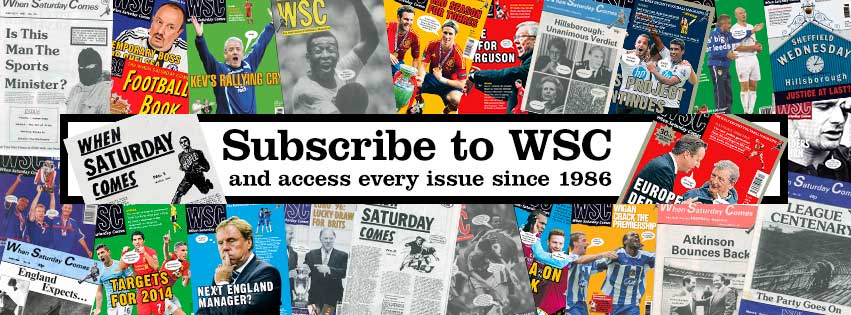With Mauricio Pochettino complaining about Rochdale’s pitch, it’s worth looking back at when most playing surfaces were a mess – as Mike Whalley explained in WSC 362, April 2017
9 February ~ Mick Harford might have won the League with Manchester United in 1992. Alex Ferguson tells a story that he wanted to sign the giant forward from Luton to use as a target man, because a rutted Old Trafford surface restricted United’s passing game as they attempted to end a 25-year wait for the title.
“The way the pitch was, we were going to have to play a different way somehow, but we didn’t have the player to do it,” Ferguson recalled. The move didn’t happen, United lost the title to Leeds, then signed Eric Cantona. Difficulties with the pitch, and with acquiring the League trophy, were soon forgotten.
Old Trafford’s surface presents no such problems today, and it is a similar story across the top division. Unless you count fixtures moved to make way for cup ties, not a single Premier League match was postponed last season, nor the season before. The improvement in the standard of pitches is a significant factor; it takes a lot these days to prevent a game going ahead. When Manchester City’s Champions League match against Borussia Mönchengladbach was called off last September, it was only after a biblical deluge that also took out a fair chunk of the local public transport network.
Even in years gone by, City had one of the country’s better pitches thanks to the head groundsman at the time, Stan Gibson, although life was not always easy for him. During the summer of 1990, the club hired out Maine Road for a series of rock concerts, including a Fleetwood Mac gig seven days before City’s opening home game of the season. Gibson, with no time to hide the scars left by 200,000 music fans, resorted to painting the damaged areas green. His successors will have more leeway after Robbie Williams plays at the Etihad this June.
Problems with top-flight surfaces were once commonplace. Derby’s head groundsman Bob Smith spent 17 years battling with the Baseball Ground’s notorious pitch. It was Smith who had to repaint the penalty spot during a match against Manchester City in 1977 when it disappeared under the mud.
Speaking to the Derby Telegraph in 2015, he described a pitch four feet below street level, high stands that prevented the wind getting through to dry the surface, knotweed and “atrocious” drainage. Some of the issues were self-inflicted, though; Brian Clough ordered the pitch to be flooded before European Cup home games against Benfica and Juventus, feeling that a boggy surface would aid Derby. “We won the Benfica games and drew against Juventus but got reported to UEFA,” Smith said.
Artificial pitches were seen as a solution to the flaws of grass in the early 1980s, but presented their own problems. Queens Park Rangers were promoted to the First Division in 1983 with a surface that their goalkeeper Peter Hucker described as “basically a bit of carpet over two feet of concrete”. Such pitches were deemed unsuitable for European competition, meaning that QPR had to play their UEFA Cup home matches at Highbury during the 1984-85 season. Oldham and Luton, along with Rangers, enjoyed good home records – and, according to many, an unfair advantage – with their artificial surfaces, which were banned from the top two divisions in 1991, and subsequently across the rest of the Football League.
It would be wrong, though, to suggest that top-flight pitch problems are confined to distant history. Chelsea attracted criticism for playing a home match in 2003 on a heavily sanded pitch that appeared to be devoid of grass. Visitors Charlton claimed it was effectively an artificial surface, in contravention of League rules. Chelsea were cleared of that charge but fined £5,000 for not telling their opponents in advance what they would be playing on.
Yet while pitch problems have affected even the country’s most high-profile clubs, one can boast a remarkable record. At the time of writing, Leeds United have not had a home game called off because of the weather since January 1994. The club may have endured turbulence on and off the pitch over the last two decades, but at least they know how to keep their playing surface in good order. Mike Whalley
This article first appeared in WSC 362, April 2017. Subscribers get free access to the complete WSC digital archive – you can find out more details here
